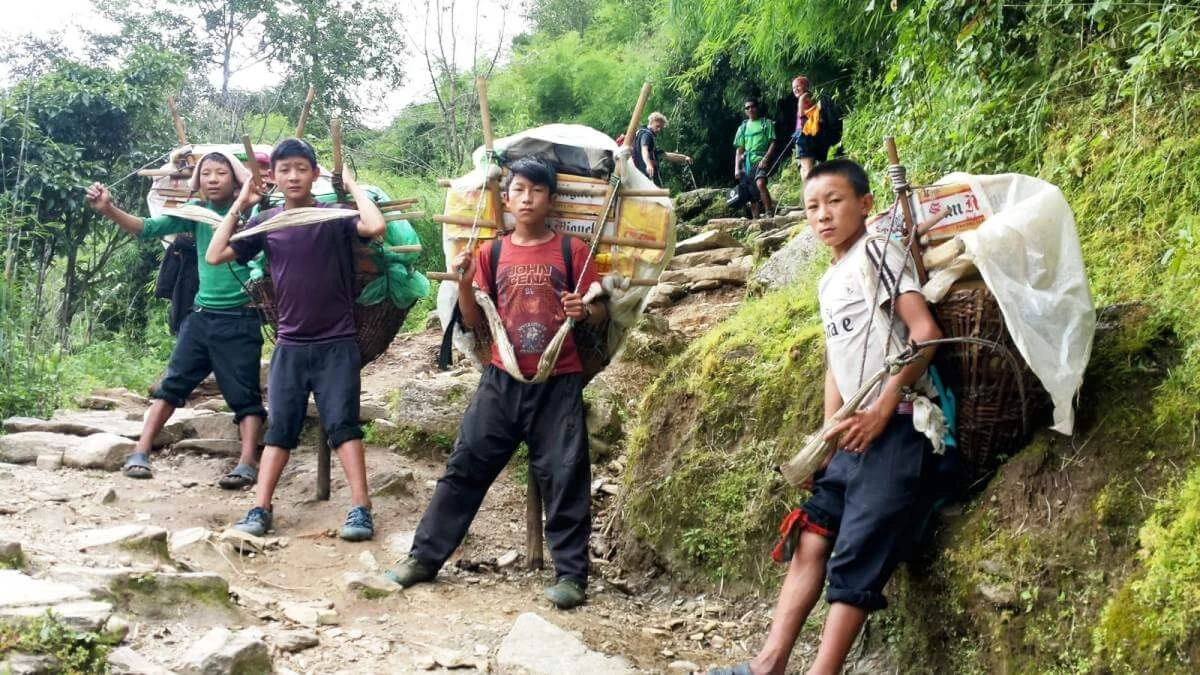Trip Overview
Classic Route To The Roof of the World Used By Early Mountaineers Before The Lukla Airport Was Built.
The Jiri to Everest Base Camp (EBC) Trek is more than just a journey to the world's highest mountain—it’s an immersive experience into the heart of Nepal, its landscapes, culture, and traditions. This is the original route taken by Sir Edmund Hillary and Tenzing Norgay in 1953, before the Lukla airport existed. Trekking from Jiri not only allows for better acclimatization but also provides a rich cultural experience, untouched by mass tourism. If you seek a classic Himalayan adventure, this trek is the perfect alternative to the Lukla flight, letting you walk through the real Nepal, step by step.
A Journey Through Time and Tradition
This trek is a cultural and historical odyssey, starting from the green hills and terraced farmlands of the lower Solu region before gradually merging into the high-altitude Sherpa settlements of the Khumbu Valley. The first few days take you through traditional Rai and Sherpa villages, where farmers cultivate crops and locals carry out their daily lives, far from the bustle of commercial trekking hubs.
Along the way, you’ll experience the warm hospitality of Nepalese tea houses, taste authentic local foods, and witness a lifestyle that has remained unchanged for centuries. Tibetan Buddhist culture flourishes in the Khumbu region, with ancient monasteries like Tengboche and Pangboche, prayer wheels, Mani walls, and fluttering prayer flags guiding your path.
Proper Acclimatization And Altitude Sickness – A Safer and Healthier Ascent
One of the greatest benefits of taking the Jiri to EBC route is the natural acclimatization process. Unlike the standard Lukla-to-EBC trek, which jumps from 2,800m to over 3,440m in just two days, this route allows your body to gradually adjust to increasing altitudes over a week-long trek.
This means:
- Reduced risk of altitude sickness – Your body gets plenty of time to adapt.
- A more enjoyable experience – Less discomfort, more energy to appreciate the beauty around you.
- Better physical endurance – The gradual climb strengthens your trekking stamina.
- If you’re worried about altitude-related issues, this trek is the safest way to reach Everest Base Camp.
No Lukla Flight Hassles – A Smooth Alternative
In recent years, flights to Lukla have faced challenges due to unpredictable weather, delays, and rerouting from Kathmandu to Manthali Airport ( 4-hour drive from Kathmandu). These logistical headaches often disrupt trekking plans, leaving travelers stranded for days.
By starting from Jiri, you eliminate these uncertainties and experience a land route rich in beauty, history, and cultural depth. You don’t just fly into the Everest region—you earn your way into it, step by step.
Who Can Do the Jiri to Everest Base Camp Trek
The Jiri to Everest Base Camp Trek (18 days) is a rewarding yet challenging journey that requires trekkers to have solid fitness levels and endurance. While it is suitable for experienced trekkers, it is also doable for determined beginners who are physically prepared and willing to push through the tough, high-altitude terrain. However, beginners may find it physically demanding, especially considering the long hours of trekking each day, steep ascents, and the need to adjust to high altitudes.
Fitness Preparation
This trek involves trekking for about 6-8 hours per day on varied, rugged terrain, making strength, stamina, and endurance crucial. In addition to physical preparation, the trek is mentally demanding. You will need to adapt to basic living conditions, including simple meals, offline time, and a slower pace of life. The trek requires embracing a simpler, quieter way of life far from city distractions, making it important to enjoy the tranquil surroundings, connect with locals and fellow trekkers, and appreciate the nature and culture of the region.
How to Prepare for the Jiri to Everest Base Camp Trek
Physical Training
Strength Training: Focus on leg and core strength to handle the steep climbs and long walking hours.
Aerobic Workouts: Include cardiovascular exercises such as running, cycling, or swimming to improve endurance.
Day Hikes: Practice hiking on trails with elevation changes to simulate the trek's physical demands.


